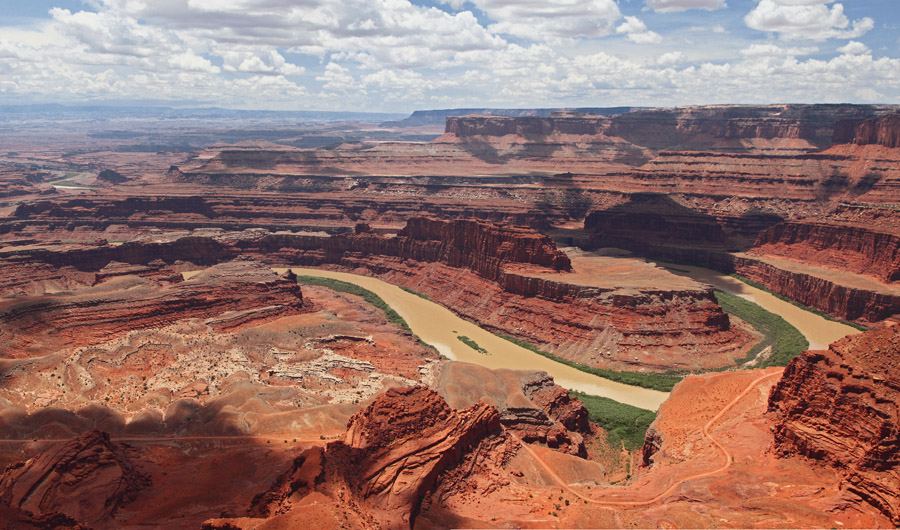OK. Let me explain.
好的,讓我來解釋。
You probably know that we can determine a tree's age by counting the rings on a cross section of its trunk.
你可能知道我們可以根據計算樹干橫截面的圈來確定一棵樹的年紀。
Each ring represents one year of the tree's life.
每一個圈代表樹木生長的一年。
So if you know the year the tree was cut, you can count inwards and date each ring all the way back to the center.
所以如果你知道樹木被砍伐的年代,你就能從外向里計算并確定每個圈的年代直到樹木的中心。
You can also tell how much moisture the tree got during each of those years by looking at the width of the rings.
你還可以通過年輪的寬度分辨出在每一年里,這棵樹受到了多少水分。
A wide ring means plenty of water while a narrow one indicates less.
一條寬的圓圈(年輪)意味著水分充足,而窄的則表示水分不足。

Fortunately for us, certain areas of the Colorado River basin are home to some very old trees, some 800 years old and older.
對我們來說幸運的是科羅拉多河流域的某些地方有一些約800年之久甚至更老的古樹。
Researchers can drill core samples, uh, basically get a cross section of a tree without having to kill it, look at the rings and get a picture of what the climate was like in the basin for each of the tree's years.
研究人員們可以鉆出核心樣本,基本上在不殺死樹木的情況下得到一個橫切面,觀察年輪并根據樹的每一年了解到流域的氣候狀況。
Well, the results tell us something we wouldn't have known without this data, that over the past 500 years or so, the Colorado River basin has experienced severe droughts, some worse than any we've ever recorded.
結果告訴我們一些在沒有數據的情況下我們無從了解的情況,在過去的500年左右,科羅拉多河流域曾經歷了極度的干旱,比我們記錄下的嚴重得多。
They also showed that the early to mid-1900s, when most of the data that led to the water-sharing agreement was collected...well, this was the wettest period in the past 400 years.
它們還說明在20世紀早到中期,為了水資源分享協議而收集多數數據時是過去400年最多雨的時期。
Well, obviously, had water management officials known then what we know now, the 1922 agreement would have been handled differently.
顯然,水資源管理官員若是在那時像我們這樣了解的話,1922年的協議就會處理得有所不同。
But today we can use the past to help prepare us for the future.
但是今天我們可以用過去幫助我們為未來做準備。
With the demand for water in the basin stays increasing and with the real likelihood of lower flows in the river, if history is our teacher, we can develop innovative methods of water conservation and reevaluate how water is distributed.
隨著該流域對水資源需求的增長和該河流存在低流量的可能性,如果歷史是我們的老師,那么我們就能建立水源保護的革新性方法并重新評估水資源是如何分配的。
What is the lecture mainly about?
課程的主要內容是什么?
What does the student find surprising about the 1922 water-sharing agreement?
關于1922的水資源共享協議,學生發現什么令人驚訝的事情?
According to the professor, what was the problem with the data recorded before the 1970s?
根據教授所說的,19世紀70年代以前的記錄的數據有什么問題?
What assumption did researchers use to draw conclusions about the Colorado River basin?
研究人員用了什么假設給科羅拉多流域下結論?
What does the professor imply when he describes the early to mid-1900s as the wettest period for the Colorado River in 400 years?
教授把19世紀早期到中期這一段時間描述為近400年來科羅拉多河流域最潮濕時期,他這么說的意思是什么?
What is the professor's attitude toward future water-management plans in the Colorado River basin?
對于科羅拉多河流域未來水資源管理計劃,教授的態度是什么?










